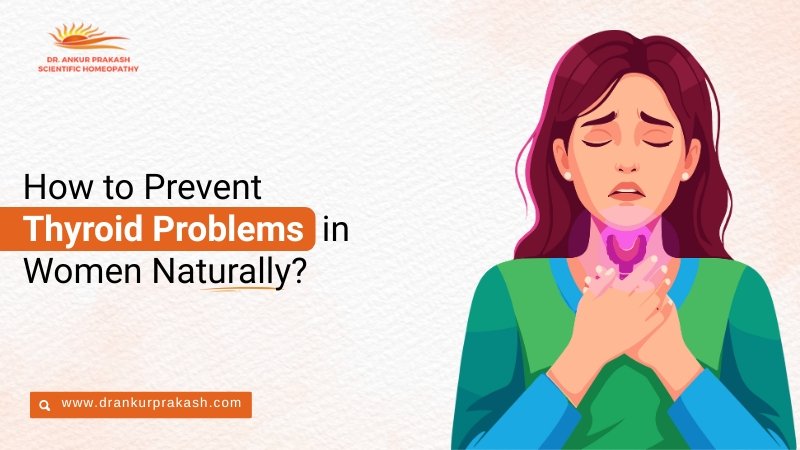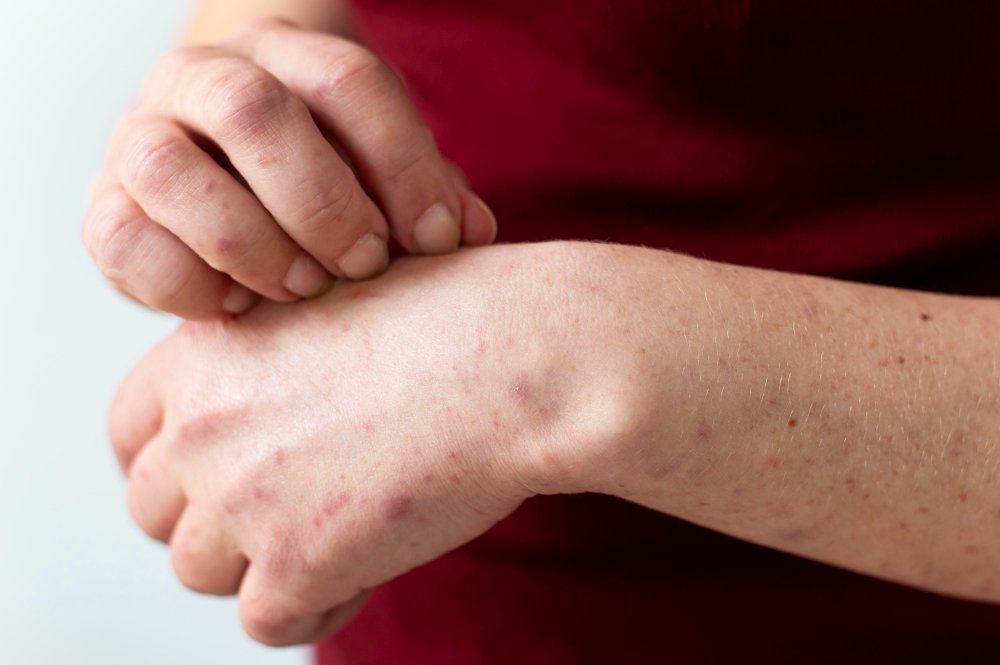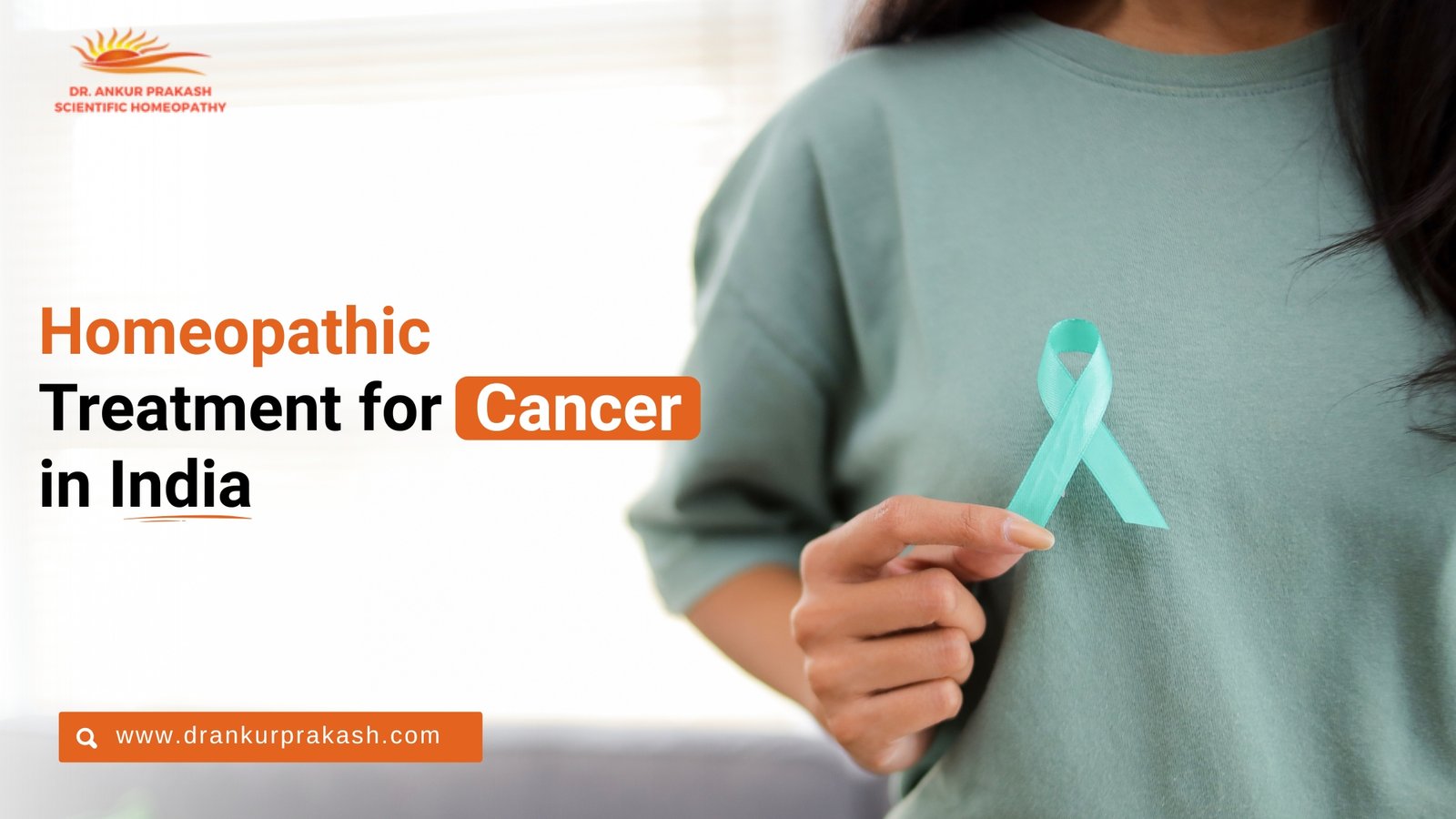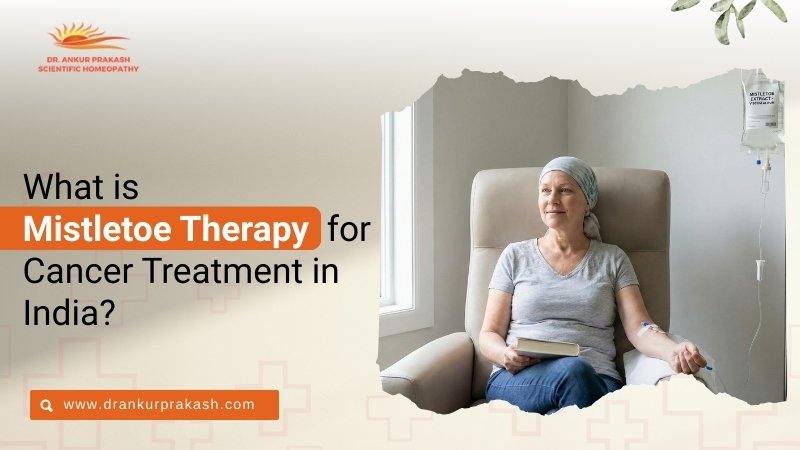Vitiligo is a chronic skin condition characterized by the loss of pigmentation, resulting in white patches on various parts of the body. It occurs when melanocytes, the cells responsible for skin color, are destroyed—often due to autoimmune reactions, genetic factors, oxidative stress, or environmental triggers like sunburn or emotional stress. While not contagious or life-threatening, vitiligo can significantly affect a person’s self-esteem and emotional health.
Although conventional treatments focus on symptom control through creams, light therapy, and surgery, they often provide temporary relief. Homeopathy treatment for vitiligo offers a holistic, personalized approach that aims to correct internal imbalances and stimulate repigmentation naturally. With remedies like Arsenicum Sulphuratum Flavum, Hydrocotyle Asiatica, and Natrum Muriaticum, homeopathy medicine for vitiligo addresses both the physical and emotional aspects of the disease.
What is Vitiligo Disease?
Vitiligo is a chronic skin disorder that leads to the formation of white patches due to the destruction of melanocytes—the cells that produce melanin (pigment). Melanin is what gives color to our skin, hair, and eyes. When melanocytes stop functioning or are destroyed, the skin starts losing its pigment in patches.
Key Characteristics of Vitiligo:
- It may begin as a small white spot and slowly enlarge over time.
- It affects all skin types but is more noticeable in darker skin.
- Patches can appear symmetrically or randomly across the body.
- The condition is neither contagious nor life-threatening.
Vitiligo is classified as an autoimmune condition and often co-exists with other autoimmune disorders such as thyroid disease, alopecia areata, or diabetes
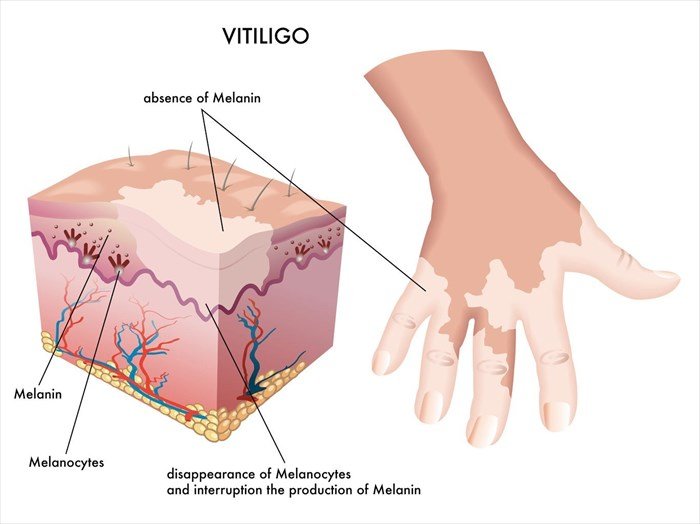
What are the Causes of Vitiligo?
Understanding the causes of vitiligo helps in both prevention and treatment. While the exact cause is still being researched, several contributing factors have been identified:
1. Autoimmune Reaction
Most cases of vitiligo occur when the immune system mistakenly attacks the melanocytes, considering them foreign invaders.
2. Genetic Factors
Vitiligo may run in families. About 30% of cases have a genetic link. Specific genes associated with immune system regulation may be involved.
3. Oxidative Stress
Free radicals or unstable oxygen molecules may damage pigment cells, especially in individuals with low levels of natural antioxidants like catalase.
4. Environmental Triggers
- Sunburns
- Emotional trauma or severe stress
- Chemical exposure (e.g., phenolic compounds)
- Repeated friction or trauma to the skin (Koebner phenomenon)
5. Neurogenic Hypothesis
Some researchers believe nerve endings in the skin release substances that are toxic to melanocytes.
6. Nutritional Deficiencies
Deficiencies in copper, zinc, vitamin B12, folic acid, and iron may play a role in the development of vitiligo in some individuals.
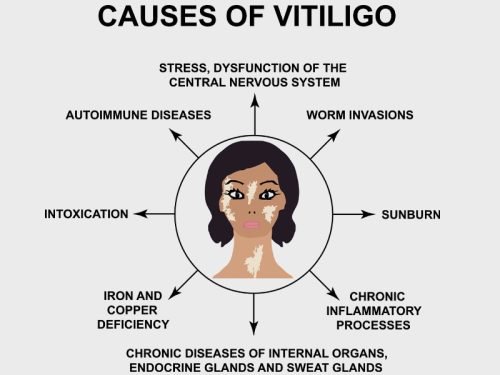
Symptoms of Vitiligo
The symptoms of vitiligo can vary depending on the type and progression. The most obvious sign is depigmented patches of skin. However, additional symptoms may also appear:
Visible Symptoms:
White or light-colored patches on the skin
Symmetrical or asymmetrical patch distribution
Graying or whitening of hair, eyebrows, eyelashes, or beard
Color loss inside the mouth, nose, genitals, or eyes
Non-visible Symptoms:
Itching or irritation in early patches
Heightened sensitivity to sun exposure
Emotional distress and social withdrawal
Early diagnosis can slow down the progression and improve the outcome of treatments.
Is Vitiligo Curable?
Vitiligo, a condition characterized by the loss of skin pigmentation, raises many questions for those affected, one of the most common being: Is Vitiligo curable? While there is no definitive cure for vitiligo, there are various treatment options that aim to manage the condition and improve the appearance of the skin.
In Allopathy:
- Conventional treatments include topical corticosteroids, immunosuppressants, UVB phototherapy, skin grafting, and depigmentation.
- These can be effective in some cases but often come with side effects or relapse after stopping treatment.
In Homeopathy:
Homeopathy takes a unique approach. Instead of suppressing symptoms, it works by:
Stimulating the Immune System: Homeopathic remedies aim to enhance the body’s immune function to prevent the destruction of melanocytes.
Correcting Internal Imbalances: Homeopathy treats the root causes of vitiligo, helping to restore balance within the body and improve overall health.
Promoting Natural Pigmentation: Homeopathic remedies work gently to support the body in regaining pigmentation over time, with a patient-specific approach based on the individual’s unique symptoms.
While homeopathy may not promise an overnight cure, many patients experience sustained improvements and even reversal of white patches over time. It is gentle, holistic, and patient-specific.
Homeopathy Treatment for Vitiligo
Homeopathy treatment for vitiligo aims at correcting the root causes—autoimmunity, oxidative stress, emotional triggers, and hereditary tendencies—without causing any side effects.
Benefits of Homeopathic Treatment:
- Individualized Remedies: Every vitiligo patient is treated differently based on history and constitution.
- Non-invasive & Safe: No harsh chemicals, surgery, or UV radiation.
- Prevention of Spread: Helps arrest the spread of white patches.
- Mind-Body Approach: Also helps manage stress, anxiety, and depression often seen in vitiligo patients.
- No Dependency: Once healing begins, there’s often no need for lifelong medications.
Thousands of patients have found hope and results through Dr. Ankur Prakash’s personalized homeopathic protocols.
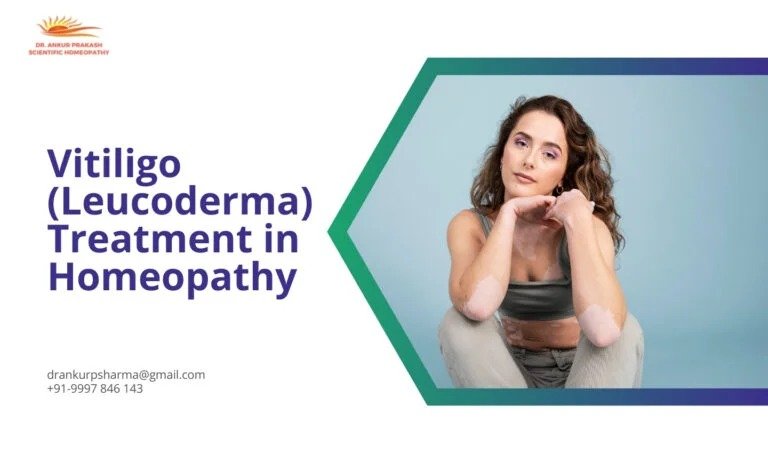
Homeopathy Medicine for Vitiligo
Vitiligo is a skin condition marked by loss of skin pigmentation due to reduced melanin production. Homeopathy focuses on treating vitiligo from within by improving immunity, balancing internal systems, and stimulating natural pigment formation. Homeopathic Medicine for Vitiligo is selected based on individual symptoms, skin type, and overall health, aiming for safe and long-term improvement without side effects. These remedies are also widely used as homeopathic medicine for leucoderma, helping support natural repigmentation and overall skin health.
- Arsenicum Sulphuratum Flavum
Helpful in reducing white patches and supporting gradual repigmentation of the skin. - Calcarea Carbonica
Often prescribed for patients with milky white patches and slow metabolism. - Natrum Muriaticum
Useful when vitiligo is linked with emotional stress or hormonal imbalance. - Sulphur
Supports skin health and is commonly used in cases with dry, unhealthy skin. - Psoralea Corylifolia
Known to stimulate melanin production and improve skin pigmentation.
Note: Homeopathic treatment should always be taken under professional guidance for best results.
The Psychological Impact of Vitiligo
Apart from physical symptoms, vitiligo can lead to emotional and psychological trauma. Many patients experience:
- Social anxiety and embarrassment
- Depression or low self-esteem
- Fear of rejection or discrimination
- Body image issues
Counseling, support groups, and a compassionate treatment plan that includes both skin and mental wellness—like in homeopathy—can significantly improve the quality of life.
Lifestyle & Diet Recommendations
Incorporating lifestyle changes and a healthy diet can complement your treatment.
Do’s:
Eat antioxidant-rich foods (carrots, beets, citrus fruits, berries)
Take foods high in B12, folic acid, and zinc
Use sun protection (SPF creams, clothing)
Practice yoga, meditation, and deep breathing
Don’ts:
Avoid spicy, fried, and highly processed foods
Limit citrus fruits (if they aggravate symptoms)
Avoid alcohol and smoking
Refrain from using harsh chemical-based cosmetics
Dr. Ankur Prakash's Successful Treatment of Transformative Vitiligo: Case Study
This compelling before-and-after case highlights the effectiveness of homeopathy treatment for vitiligo by Dr. Ankur Prakash. The patient presented with prominent depigmented patches around the lips—a common yet emotionally distressing presentation of vitiligo disease. Through a customized and holistic approach using homeopathy medicine for vitiligo, the pigmentation was significantly restored, resulting in near-complete repigmentation and a visibly even skin tone.
This case underscores the power of individualized, root-cause-focused homeopathic care in treating chronic skin conditions. It also answers the common question, “Is vitiligo curable?”—showing that with expert intervention, lasting transformation is possible.
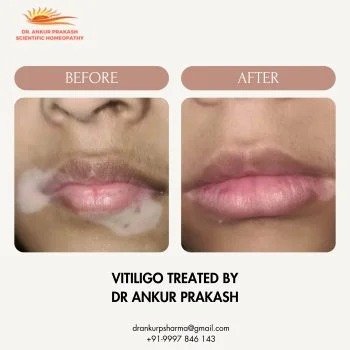
Final Thoughts
Vitiligo is not just a cosmetic issue. It’s a deeply personal and often emotionally painful condition. But with awareness, support, and the right treatment approach, recovery is possible. Homeopathy offers hope where conventional medicine often falls short—by treating the individual, not just the disease.



